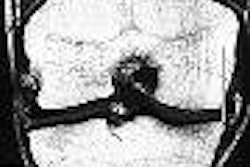Everyone who has read articles about the MRI suite learned long ago that iron-containing, or ferromagnetic, materials present significant hazards to patients and staff. Thankfully, specialty tools, appliances, furnishings, and clinical devices have been designed to function safely near MRI scanners. In many regards, clinical equipment designed to be safe near an MRI is easier to find and purchase than many of the myriad of nonclinical furnishings and appliances, such as furniture and fixtures, that are needed in the suite.
Clinical equipment for the MRI suite is subject to U.S. Food and Drug Administration (FDA) regulation and is required to be in compliance with contemporary standards for safety testing. Unfortunately, not all facilities feel that appropriately designed and tested equipment is necessary, and this puts patients and staff at risk. For an example of this, see the Agency for Healthcare Quality and Research (AHRQ) Morbidity and Mortality Rounds on the Web, Pediatrics, February 2003.
Lighting fixtures, furniture, picture frames, wheelchairs, and all manner of other fixtures that are often found inside MRI departments are often not subject to the same rigorous evaluation and present safety challenges for facilities.
Take, for example, furniture. A letter to the editor in a recent issue of the Journal of Magnetic Resonance Imaging (May 2006, Vol. 23:5, pp. 781-782) describes a "wooden" chair in the magnet room that pinned a woman to an MRI magnet when she scooted it toward the patient table to be close to her husband who was inside the bore. That little scoot was enough for the magnetic field from the 1.5-tesla MRI to attract the steel reinforcing hidden underneath the seat, sandwiching her hand between the chair and the magnet. She remained pinned to the magnet, trapped by this chair -- which had been presumed safe -- until a pair of people wrestled the chair free from the magnet.
The chair had spent nine months in the magnet room prior to this incident and was thought to be safe by virtue of the fact that it was predominantly wood. Unfortunately, only after this incident was the chair upended to reveal the steel components plainly visible under the seat.
How many magnet rooms across the country are similarly populated with furnishings and equipment that are only presumed safe? How many MRI facilities are aware of the safety of the finishing touches that they've placed in their magnet rooms?
The problem is complicated by a dizzying array of terms, standards, and colloquialisms used to market furniture, fixtures, and appliances for MRI facilities. Too often these marketing phrases cloud the real properties and safety features of different products.
Products marketed as "nonmagnetic" often have many ferromagnetic components that, if separated from the whole, are attracted to magnets and will also alarm the new breed of ferrous-only detectors designed to enhance facility safety. Products are often represented as interchangeably "MR Compatible" or "MR Safe" without an acknowledgement that those terms, superseded by new FDA language, have significantly different meanings from one another. Recently, the very definition of MR Safe changed, adding even further confusion to an already convoluted situation.
The new "MR Safe" terminology precludes the use of any metallic components. This excludes virtually every wheelchair, fire extinguisher, gurney, and cart currently marketed as "safe" for MRI. For facilities with an existing inventory of equipment and devices designed for use in the MRI suite, this requires a piece-by-piece re-examination and reclassification, changing from the old MR Safe to the new MR Conditional. This will likely only exacerbate an already confusing situation.
This leaves MRI service providers in the uncomfortable position of either having to rely on the professionalism of their equipment vendors for the MRI suite in lieu of applied standards and regulations, or MRI providers must literally scrutinize every nut and bolt of every product they purchase for their facilities. Failing to do so will expose facilities to greater liability and patients to greater risk.
By Tobias Gilk
AuntMinnie.com contributing writer
July 19, 2006
Reprinted from www.mri-planning.com by permission of the authors. If you would like more information on any aspect of MR facility design or safety, please contact Robert Junk or Tobias Gilk at Jünk Architects.
Related Reading
Selecting a site for your next MRI suite: It pays to plan ahead, July 12, 2006
Radiology is dead -- long live imaging! June 23, 2006
Keeping Zone III secure: Access controls for MRI suites, June 7, 2006
Magnet room doors and quench entrapment, May 22, 2006
When MRI throughput means more than revenue, April 11, 2006
Copyright © 2006 Jünk Architects, PC



















